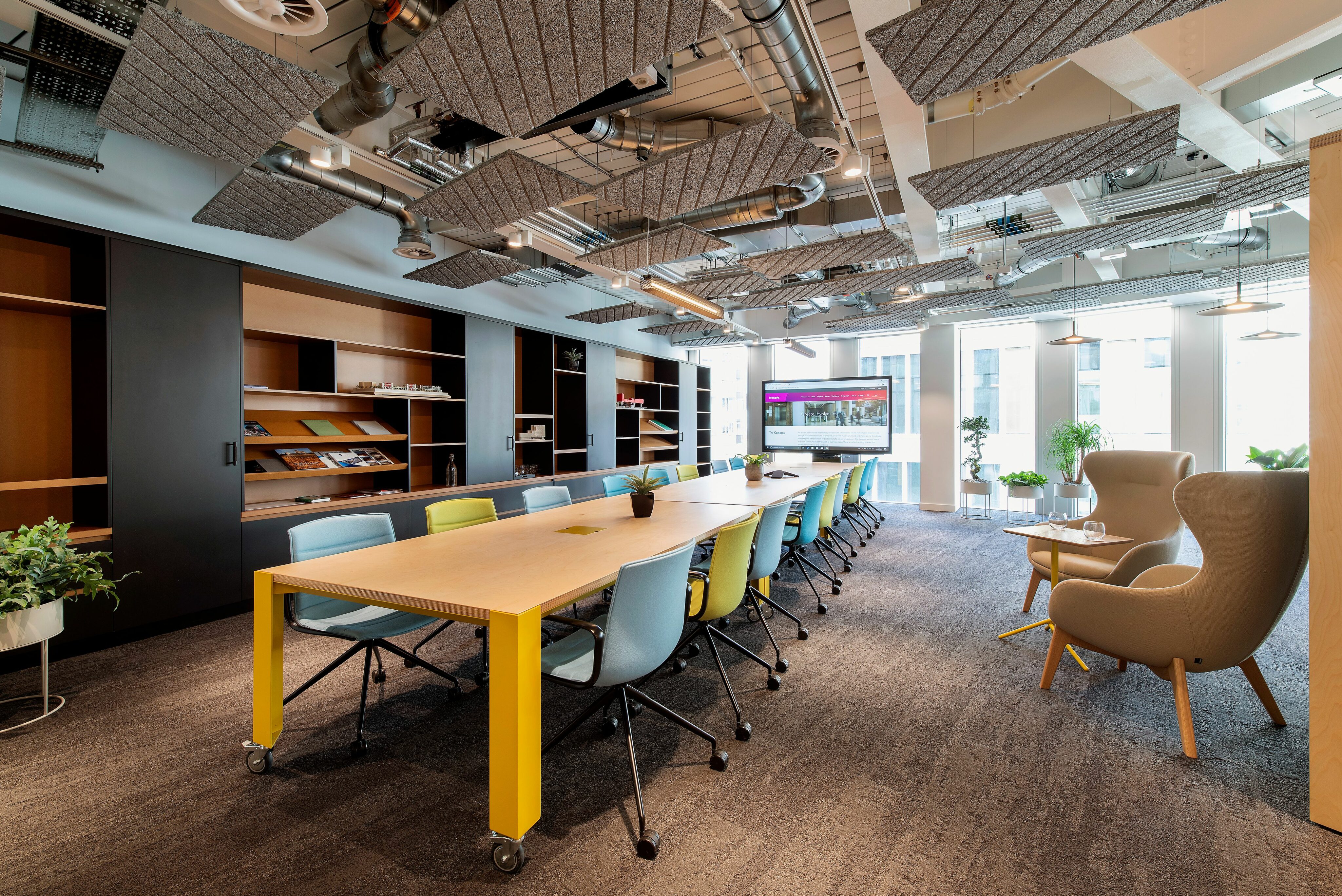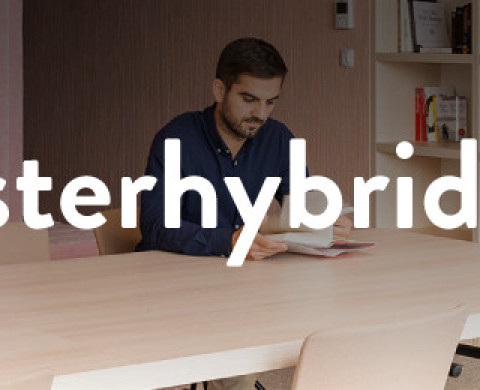Don’t let hybrid working mean isolated working
In this week’s #masterhybridwork blog, we look at how a lack of physical closeness can lead to professional isolation. It’s an easy trap to fall in. Hybrid workplaces – where people spend time working both in the office and remotely – are almost tailor-made for siloed working.
And when you consider that research by the Harvard Business School found that 81% of workers would prefer to work hybrid post-pandemic, professional isolation could be one of the biggest business challenges of modern times.
Here at HB Reavis, we’ve developed a wide range of hybrid-friendly services and technologies. In particular, our Origameo team has lots of strategies for helping employees feel part of the same team. But there’s more to it than reinforcing a culture.

Professional isolation
Hybrid working can reduce opportunities for employees to get together in social situations – which can cause depression and anxiety. It can impact productivity and careers too, for example if someone doesn’t get all the information or resources they need for a task, loses out on a promotion because their good work wasn’t properly recognised, or misses out on vital learning and mentoring.
Lack of information and resources
Remote working can mean you’re not front-of-mind when it comes to sharing information and resources. The most common issues range from not getting what you need for a task, getting things late or not getting proper oversight from managers.
There can be process issues too. In an office, everything you need is likely only a short walk away – the forms for some paternity leave, for example, IT support, or the post room. When you’re working remotely, tasks can take double or triple the time – and the resulting drop in efficiency, focus and autonomy can be overwhelming.
Poor performance management
“Despite the raise in productivity of remote workers by 13% over the nine months of the experiment, it was also found that the promotion rate for that group fell by almost 50%”
Bloomberg
In the previous article, we discussed how remote employees can be discriminated against when it comes to promotion. Due to isolation, they have less development opportunities and, even though they might have additional skills, it’s difficult for managers to know about and maximise them.
It’s not all down to management. As an employee, you need to find ways to demonstrate your skills. You might take notes in a meeting, then rewrite the content into a presentation that follows the brand guidelines. Voilà: you might not have graphic design in your job description or agenda, yet you’ve proved your skills to your manager. Equally, it’s wrong to feel you can’t ask for a promotion, so long as you can give valid reasons for a step up.
According to experts in Origameo, upskillig leaders in this areas is critical when companies transition towards hybrid way of working. Only leaders who feel confident to manage remotely are able to trust their team-members.

Mentoring and L&D sometimes isn’t possible
According to IBM, just 38% of employees feel their employer has helped them learn new skills during the recent pandemic. That said, some forms of learning simply can’t be done remotely.
Take experiential – on-the-job – learning. It’s been proved as the most effective way to acquire new skills, but many people haven’t been working directly alongside their colleagues: they can’t combine theory with action. They can’t even learn through observation.
Mentoring is tricky too. It relies heavily on the relationship between two colleagues – and it’s hard to be ‘human’ in a Zoom meeting – to be relaxed, informal and comfortable sharing experiences and the odd joke.
This is perhaps one of the most pressing problems. Research shows that both mentors (69%) and mentees (72%) stay with their employers for longer – compared to those who don’t have this kind of relationship at work (49%).

Solutions that keep everyone included
There are a number of activities and strategies that can stop employees from feeling professionally isolated, from the practical to ones that require time and investment – but give you an edge when it comes to recruiting and retaining talent.
Set up regular in-person interactions
Make sure colleagues often meet in person – and not just for business purposes. Create opportunities for informal chats, where everyone can share information and get to know one another better.
Overcommunicate
Use lots of different channels to communicate with colleagues. Be transparent, and keep everyone in the loop in terms of work and, if they’re happy to share, what people are up to in their personal lives.
Evolve L&D (Learning and Development)
Create learning processes that can work in a hybrid setup, for example set days when junior colleagues can shadow their managers in the office. And invest in learning platforms and tools that suit hybrid environments – so your people can successfully develop their knowledge and skills.
Educate leaders
Show them how to manage in hybrid world. Make sure they understand and can spot potential challenges, and encourage them to be role model for their teams.
Enhance onboarding
Make sure your onboarding process is in-person. Leaders must be heavily involved too – spending good amounts of time with the new recruits. Formally assign your new employees with both a social buddy and a more typical, work-led buddy. This way, they’ll smoothly settle into the company as well as their role.
Don’t miss out on any of our blogs. Sign up for our newsletter and we’ll keep in touch:
"*" indicates required fields




